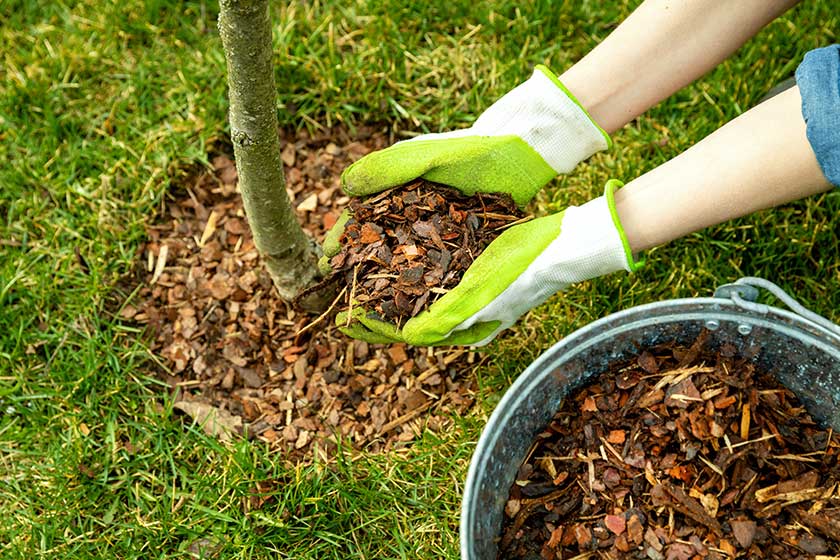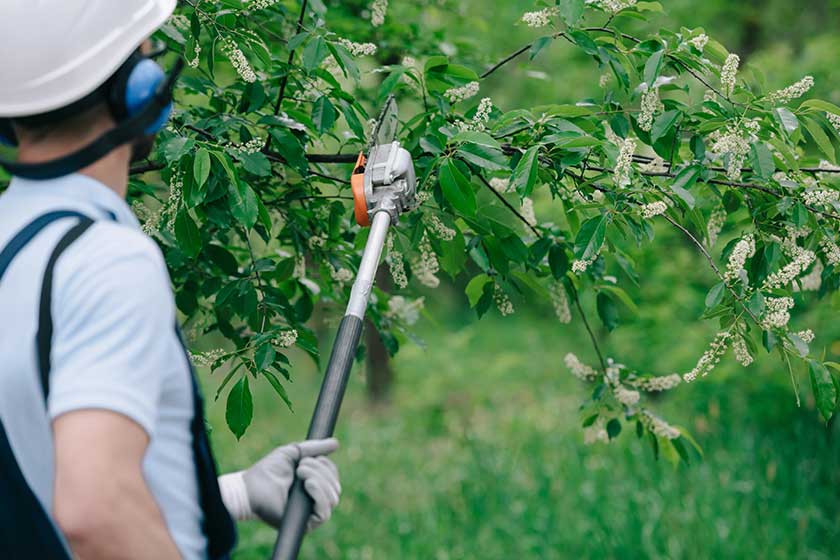Taking care of your lawn is crucial for the health and appearance of your home’s exterior. A well-maintained lawn boosts curb appeal and offers a pleasant space for outdoor activities, while neglecting it can result in costly repairs down the road. Whether you’re handling lawn care yourself or hiring professionals, understanding the costs involved in residential lawn care is essential.
In this guide, we’ll explore the costs associated with maintaining your lawn, covering everything from regular mowing to specialized services like aeration and seeding. We’ll also examine the factors influencing the overall price, and how to find ways to reduce your lawn care expenses while maintaining a lush, healthy yard.
What Does Residential Lawn Care Entail?
Residential lawn care includes a variety of tasks, all aimed at maintaining the health and appearance of your yard. These services generally fall into two categories: basic lawn care and specialized treatments.
- Basic Lawn Care
Basic lawn care tasks include mowing, edging, watering, and fertilizing your grass. These services are performed regularly to keep your lawn in top condition. Mowing is typically done weekly or bi-weekly during the growing season, while watering is often required multiple times a week, depending on your climate.
- Specialized Treatments
In addition to basic lawn care, some services are performed less frequently but are essential for long-term lawn health. These include aeration, seeding, dethatching, pest control, and irrigation system maintenance. These services require specialized equipment and expertise, which can increase the overall cost of lawn care.
Average Costs of Residential Lawn Care in 2024
Several factors, including the size of the lawn, the frequency of service, and the location influence the cost of maintaining a lawn. On average, U.S. homeowners spend about $300 annually on residential lawn care. However, this number can vary significantly, with costs ranging from $100 to $500 or more depending on the services required.
Let’s take a closer look at the most common lawn care services and their associated costs.
Lawn Care Pricing by Service Type
Each type of lawn care service comes with its pricing, largely determined by the complexity of the task, the time required, and the type of equipment needed. Below are the average costs for the most common lawn care services:
- Mowing
Mowing is the most basic and essential service for keeping your lawn neat and healthy. Most homeowners need their lawns mowed weekly or bi-weekly during the growing season. The cost for mowing services ranges from $36 to $168 per visit, depending on the size of your yard and how frequently you need the service.
For example, smaller lawns may only cost $40 to mow, while larger yards that require more time and effort could cost upwards of $150 per visit. Regular mowing is key to preventing overgrowth and keeping your lawn looking its best throughout the year.
- Aeration
Aeration is the perforating the soil with small holes to let water, air, and nutrients to infiltrate deep into the grass roots. This service is essential for lawns that experience heavy foot traffic or have compacted soil. Aeration costs range from $43 to $496, depending on the size of the yard and the type of aerator used.
Aeration is typically done once or twice a year, depending on the condition of your lawn. It’s a vital step in ensuring that your grass has the nutrients it needs to grow strong and healthy.
- Dethatching
Dethatching involves removing the layer of dead grass, leaves, and debris that can accumulate on your lawn over time. Thatch can prevent water and nutrients from reaching the roots of your grass, leading to poor growth and the potential for disease.
Dethatching is a labor-intensive process, and costs can range from $100 to $1,150 depending on the size of the lawn and the amount of thatch that needs to be removed. For lawns with a thick thatch layer, this service is critical for restoring the health of the grass.
- Fertilization
Fertilizing your lawn is necessary to provide the nutrients it needs to grow green and healthy. Fertilization costs can range from $42 to $733 per application, depending on the size of the lawn and the type of fertilizer used.
Most lawns require fertilization at least once or twice a year, but some may need more frequent applications depending on the type of grass and soil conditions. Proper fertilization can enhance the color and thickness of your grass, making it more resistant to weeds and disease.
- Seeding
Seeding is used to fill in bare spots, repair thinning grass, or introduce new grass varieties to your lawn. Seeding costs vary widely depending on the size of the area being treated and the type of seed used. The cost can range from $90 to $2,940, with larger areas and premium grass seeds costing more.
Seeding is often combined with other services like aeration and fertilization to ensure the new grass takes root and grows evenly. It’s a great way to restore the health of your lawn without the expense of installing sod.
- Leaf Removal
Removing leaves from your yard is essential for maintaining the health of your grass. Leaves can block sunlight, trap moisture, and encourage pests, all of which can damage your lawn. The cost of leaf removal services typically falls between $165 and $485, depending on the size of the yard and the amount of leaves.
This service is especially important during the fall months when trees shed their leaves in large quantities. Regular leaf removal can prevent long-term damage to your lawn and save you money on repairs later.
- Yard Cleanup
Yard cleanup involves removing debris, trimming overgrown plants, and tidying up your yard after storms or during seasonal changes. The cost for yard cleanup services ranges from $174 to $436. Many homeowners choose to combine yard cleanup with other services, such as mowing and aeration, for a more comprehensive maintenance plan.
Yard cleanup is particularly important after winter when your lawn may be littered with debris from storms or fall leaves. It helps prepare your yard for the growing season and ensures that your lawn remains in good condition.
Factors That Affect Lawn Care Costs
While the average prices for lawn care services provide a general idea of what to expect, the actual cost of maintaining your lawn will depend on several factors. These include the size of your lawn, the frequency of service, your location, and any additional services you may require.
- Lawn Size
The size of your lawn plays a significant role in determining the cost of lawn care. Bigger lawns need more materials, labor, and time, which increases the overall cost. For example, mowing a small yard may only cost $40, while a large lawn could cost over $100 per visit.
If your lawn is particularly large, you may also need more frequent services like aeration or fertilization to maintain its health. In general, the bigger the lawn, the more expensive it will be to maintain.
- Service Frequency
How often you need lawn care services can also affect the overall cost. Regular services like weekly or bi-weekly mowing are generally more cost-effective than one-time visits. Many homeowners opt for a regular maintenance plan to keep their lawn looking its best year-round.
Service frequency can also impact the cost of specialized treatments like fertilization or aeration. For example, a lawn that requires multiple applications of fertilizer throughout the year will cost more than one that only needs a single treatment.
- Location
Where you live can have a significant impact on the cost of lawn care services. In areas with higher labor rates or where the demand for landscaping services is high, prices may be more expensive. Conversely, in regions with lower labor costs or less competition among lawn care companies, you may be able to find more affordable rates.
It’s also worth noting that certain regions may require more specialized lawn care services due to climate conditions. For example, homeowners in arid climates may need additional irrigation services, while those in colder regions may require winterization to protect their lawns from freezing temperatures.
- Additional Services
In addition to basic lawn care, many homeowners require specialized services to address specific issues or maintain the overall health of their lawn. These services can include pest control, tree trimming, irrigation system repair, or sod installation, all of which can add to the overall cost of lawn care.
For example, if your lawn is experiencing a pest infestation, you may need to hire a professional to treat the problem. Similarly, if you have trees on your property, regular trimming or removal may be necessary to prevent damage to your lawn or home.
DIY Lawn Care vs. Professional Services
When it comes to maintaining your lawn, homeowners often face the choice between handling the work themselves or hiring professionals. Both options have their pros and cons, and the best choice for you will depend on your budget, time, and expertise.
- DIY Lawn Care
Doing your lawn care can save money on labor costs, but it requires an investment in equipment and tools. For example, purchasing a lawn mower, aerator, or dethatching rake can be expensive upfront, but it may be more cost-effective in the long run if you plan to handle your lawn care.
DIY lawn care also gives you full control over how your lawn is maintained, allowing you to tailor your care plan to the specific needs of your yard. However, it can be time-consuming, and certain tasks, like aeration or pest control, may require specialized knowledge or equipment.
- Professional Lawn Care Services
Hiring a professional lawn care service offers convenience and expertise. Lawn care companies have the tools, knowledge, and experience to handle all aspects of lawn maintenance, from basic mowing to more complex tasks like irrigation repair or fertilization.
Tips for Saving on Lawn Care Costs
Maintaining a beautiful lawn doesn’t have to break the bank. Here are some tips for saving on lawn care costs while keeping your yard in top condition:
- Bundle Services
Many lawn care companies offer bundled service packages that can provide significant savings compared to purchasing services individually. For example, bundling mowing, aeration, and fertilization into a regular maintenance plan may cost less overall than paying for each service separately.
- Choose Low-Maintenance Plants
Consider incorporating native plants and grasses into your landscape that require less water and care. These plants are well-suited to your local climate and typically need less attention than non-native species. By reducing the amount of watering, fertilizing, and pest control needed, you can save on both labor and material costs.
- Do Basic Tasks Yourself
While professional lawn care services are convenient, you can still save money by handling basic tasks like mowing and watering on your own. These tasks don’t require specialized equipment, and doing them yourself can free up funds for more complex services like aeration or fertilization.
- Get Multiple Quotes
Before committing to a lawn care company, it’s always a good idea to get quotes from multiple providers. This allows you to compare prices and services to ensure you’re getting the best value for your money. Don’t be afraid to negotiate with companies for better rates, especially if you plan to hire them for regular services.
Maintaining a beautiful, healthy lawn year-round requires care and attention. Whether you need basic lawn care or more specialized services like plant and tree installation, design, or tree removal, our team of experts at Covenant Landscapes is here to help.



